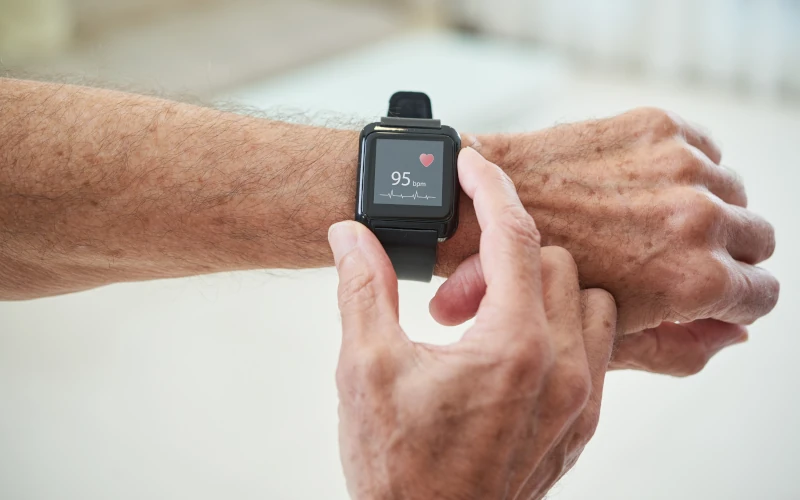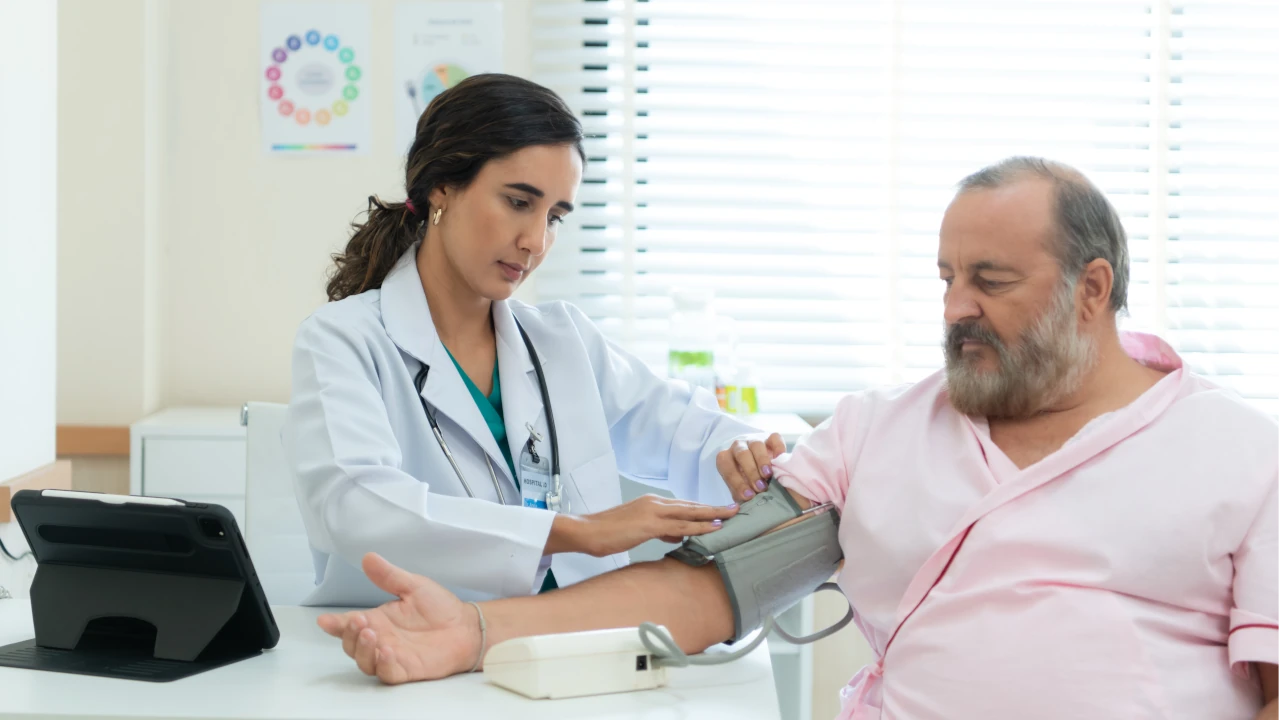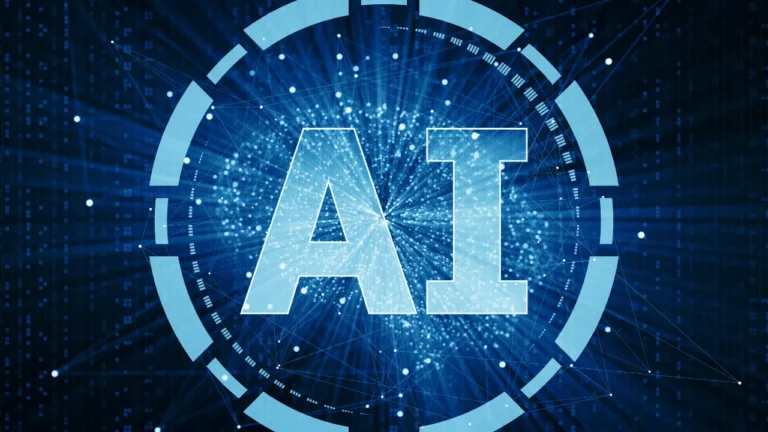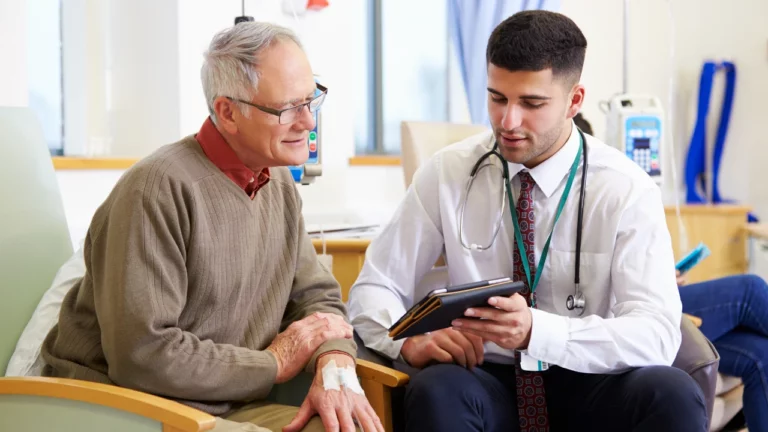Hypertension is a global health challenge, leading to serious health issues like cardiovascular diseases and stroke. Its silent nature requires vigilant management, highlighting the need for continuous monitoring.
This article explores the transformative potential of remote patient monitoring (RPM) technologies in managing hypertension. RPM has evolved significantly in recent years, incorporating wearable devices and data analytics to enable real-time blood pressure tracking. The RPM innovation facilitates a more proactive and personalized approach to care outside traditional healthcare settings.
What is Hypertension?
Hypertension, commonly known as high blood pressure, is a condition where the blood’s force against your artery walls is too high. It’s a major health concern that can lead to severe complications if not managed properly. Here’s a closer look at its definition, risk factors, and the importance of monitoring:
Definition and Classification
- Primary Hypertension: Develops over time with no identifiable cause.
- Secondary Hypertension: Caused by an underlying condition.
- Blood Pressure Categories: Ranges from normal to elevated, and stage 1 or 2 hypertension, based on specific readings (measured in mm Hg).
Risk Factors and Complications
- Risk Factors: Include age, obesity, sedentary lifestyle, tobacco use, high-salt diet, excessive alcohol, and stress.
- Complications: Uncontrolled hypertension can lead to heart attack, stroke, heart failure, kidney damage, and vision loss.
The Importance of Continuous Monitoring
Continuous monitoring is key in hypertension management. It helps in:
- Early Detection: Spotting high blood pressure early can prevent severe health issues.
- Timely Intervention: Adjustments in medication and lifestyle can be made swiftly, avoiding complications.
- Remote Patient Monitoring (RPM): Technologies allow real-time tracking, offering a proactive approach to managing blood pressure.
By understanding these aspects of hypertension, patients and healthcare providers can work together more effectively to control blood pressure, prevent complications, and promote overall health. Regular monitoring, combined with the right lifestyle choices and treatment plans, can significantly reduce the risks associated with hypertension.
Advancements in Remote Patient Monitoring for Hypertension
The landscape of RPM for hypertension has witnessed significant advancements in 2024, driven by technological innovation and the increasing demand for personalized healthcare solutions. These developments have not only transformed the way blood pressure is monitored but also how hypertension is managed, making care more proactive, precise, and patient-centered.
Latest RPM Technologies and Devices
The year 2024 marks a leap forward in RPM technologies, with devices becoming more sophisticated, user-friendly, and integrated. Key advancements include:
- Smart Blood Pressure Monitors: Enhanced with Bluetooth connectivity, these devices allow for automatic data transfer to healthcare providers and patient health records, facilitating real-time monitoring and analysis.
- Wearable Tech: Beyond traditional monitors, wearable devices like smartwatches and fitness bands now incorporate blood pressure monitoring functions, offering continuous tracking without interrupting daily life.
- Mobile Health Applications: Mobile Health Applications enhance RPM by linking directly with devices for blood pressure tracking and more. They offer personalized insights and reminders, promoting patient self-management. Discover the latest in RPM innovation with the unveiling of the DrKumo CyberHealth Intelligent Center® XL Hub, advancing patient care technology.
Innovations in Wearable Technology
Wearable technology has seen remarkable innovations, particularly in the accuracy and convenience of blood pressure monitoring:
- Non-invasive Sensors: These sensors offer continuous monitoring capabilities without the need for cumbersome cuffs, using optical and bioimpedance technologies to measure blood pressure through the skin.
- Embedded Algorithms: Wearables now come equipped with advanced algorithms that can detect blood pressure changes more accurately, accounting for individual variances and activities to provide reliable readings.

AI and Machine Learning Integration
Artificial Intelligence (AI) and Machine Learning (ML) have become integral to RPM, revolutionizing hypertension management with predictive analytics:
- Predictive Analytics: AI algorithms analyze vast amounts of RPM data to identify patterns, predict future blood pressure trends, and alert both patients and providers to potential health risks before they escalate.
- Personalized Care Plans: Machine learning models tailor treatment and management plans to the individual, considering historical data, lifestyle factors, and real-time readings to optimize outcomes.
- Automated Alerts and Interventions: AI-driven systems automatically notify healthcare teams of significant changes in a patient’s condition, facilitating immediate intervention and potentially preventing emergencies.
These technological advancements in RPM represent a paradigm shift in hypertension management. By harnessing the power of wearable technology, AI, and machine learning, healthcare providers can offer more nuanced, efficient, and effective care, significantly improving the quality of life for individuals with hypertension. The future of hypertension management looks promising, with RPM technologies leading the way in making healthcare more accessible, predictive, and personalized.
Implementing RPM in Clinical Practice
Integrating RPM into clinical practice represents a forward-thinking approach to healthcare, enhancing the management of chronic conditions like hypertension. This integration process involves strategic planning, training, and adherence to best practices to ensure seamless operation and maximum benefit to patients.
Steps for Integrating RPM into Healthcare Workflows
- Assessment and Planning: Evaluate the current healthcare delivery model to identify areas where RPM can enhance care. This includes assessing patient needs, technology requirements, and workflow adjustments.
- Technology Selection: Choose RPM devices and platforms that align with your clinical goals, considering factors like ease of use, accuracy, and interoperability with existing health record systems.
- Integration with Health IT Systems: Ensure RPM tools are compatible with electronic health records (EHRs) and other clinical management systems for efficient data sharing and analysis.
- Pilot Testing: Before full-scale deployment, conduct a pilot test with a select group of patients and staff to identify potential challenges and make necessary adjustments.
Training Healthcare Staff and Educating Patients
- Staff Training: Provide comprehensive training for healthcare providers on the operation, data interpretation, and patient communication aspects of RPM devices. Emphasize the importance of data privacy and security.
- Patient Education: Offer clear instructions and support for patients on using RPM devices, understanding their readings, and knowing when to contact their healthcare provider. Encourage patient engagement by explaining the benefits of RPM in their care management.
Best Practices for Device Selection, Deployment, and Data Management
- Device Selection: Opt for devices with proven accuracy, reliability, and user-friendliness. Consider devices that patients are comfortable using in their daily lives to ensure consistent monitoring.
- Deployment Strategy: Develop a clear protocol for deploying RPM devices, including distribution, setup assistance, and ongoing support for patients.
- Data Management: Implement robust data management policies that ensure patient data is securely collected, transmitted, and stored. Utilize data analytics tools to effectively interpret the influx of health data for timely clinical decision-making.
By following these steps and best practices, healthcare providers can successfully implement RPM into their clinical practice, thereby enhancing hypertension management and improving patient outcomes. The key to success lies in careful planning, effective training, and the strategic use of technology to create a more responsive and personalized healthcare experience.
RPM Protocols for Hypertension Management
RPM offers a sophisticated approach to managing hypertension, allowing for tailored care based on individual patient data and needs. Effective RPM protocols are pivotal in optimizing patient outcomes, ensuring timely interventions, and maintaining patient engagement. Here are key strategies for developing and implementing RPM protocols in hypertension management:
Personalized Monitoring Plans
- Assess Patient Risk Profiles: Begin by evaluating each patient’s risk factors, including age, lifestyle, existing health conditions, and family history of hypertension. This assessment helps in categorizing patients into different risk tiers.
- Customize Monitoring Frequencies: Based on the risk assessment, create personalized monitoring plans that dictate how often patients should measure their blood pressure. Higher-risk patients may require more frequent monitoring than those at lower risk.
- Individualized Goals and Interventions: Set specific blood pressure targets and lifestyle modification goals tailored to each patient’s condition, preferences, and capabilities.
Setting Thresholds for Alerts and Interventions
- Define Critical Values: Establish clear blood pressure thresholds that trigger alerts for both patients and healthcare providers. These values should be based on clinical guidelines and individual patient goals.
- Automated Alert Systems: Implement an automated system within the RPM platform to send immediate notifications when a patient’s readings exceed or fall below the predefined thresholds.
- Escalation Protocols: Develop protocols outlining the steps to be taken when alerts are triggered, including immediate lifestyle advice, medication adjustments, or urgent medical consultations as needed.
Guidelines for Regular Follow-ups and Adjusting Treatment Plans
- Scheduled Reviews: Set regular intervals for reviewing collected RPM data, assessing patient progress, and providing feedback. This could be monthly or quarterly, depending on the patient’s condition and risk level.
- Data-Driven Adjustments: Use the insights gained from RPM data to make informed decisions about adjusting treatment plans. This may involve changing medications, modifying dosage, or intensifying lifestyle interventions.
- Engage and Educate: During follow-ups, engage patients in discussions about their progress, challenges, and any concerns they have. Use this opportunity to educate them further about managing hypertension and the importance of adherence to their personalized plan.
By adhering to these protocols, healthcare providers can leverage RPM to deliver more proactive, personalized, and effective hypertension management. The key lies in the careful design and implementation of monitoring plans, responsive alert systems, and dynamic, data-informed treatment adjustments, all aimed at improving patient health outcomes.
Patient Engagement and Self-Management in Hypertension Care
To boost patient engagement and adherence in managing hypertension with RPM, a clear strategy centered on patient education and empowerment is essential. Simplifying the complex world of hypertension management into understandable pieces is key. By using digital resources, interactive sessions, and straightforward counseling, healthcare providers can demystify the condition, making patients more inclined to take an active role in their treatment. This not only helps patients make informed decisions but also emphasizes the critical nature of regular monitoring and sticking to their medication schedules.
Empowering patients goes beyond just education; it involves providing them with the tools and knowledge for self-management and lifestyle changes. Practical advice on diet, exercise, stress management, and how to manage medications effectively can make a real difference. Digital tools, like apps for tracking blood pressure, diet, and physical activity, support these efforts by making health management a part of daily life. These resources encourage patients to take control, offering a sense of independence in their healthcare journey.
Lastly, the relationship between healthcare providers and patients plays a crucial role in maintaining high levels of engagement. A supportive environment that fosters open communication and provides regular feedback can greatly motivate patients. Celebrating their progress, adjusting treatments based on personal experiences, and continuously offering encouragement are all strategies that enhance motivation. This approach not only leads to better management of hypertension through RPM but also boosts patient satisfaction and health outcomes, showcasing the effectiveness of a collaborative, informed, and empowered approach to healthcare.
Data Security and Privacy Considerations
Data security and patient privacy are paramount in the successful implementation of RPM systems. To address these concerns, healthcare providers must ensure strict adherence to healthcare regulations, such as the Health Insurance Portability and Accountability Act (HIPAA) in the United States. These regulations set the standard for protecting sensitive patient data and ensuring confidentiality.
Best practices for secure data transmission and storage include employing encryption technologies for data in transit and at rest, implementing robust authentication mechanisms, and regularly updating security protocols to guard against cyber threats. Additionally, educating both healthcare providers and patients about the importance of data security and privacy practices plays a crucial role in maintaining trust and compliance.
By prioritizing these data security and privacy measures, healthcare organizations can create a secure environment for RPM, fostering patient confidence in the use of these technologies for managing their health.
DrKumo RPM for Hypertension Management
DrKumo Inc. is at the vanguard of RPM, offering innovative solutions that transform the management of chronic diseases, acute care, and post-operation care directly from the comfort of one’s home. Their technology leverages the latest in HIPAA-compliant, mobile-enabled RPM tools, combined with real-time monitoring and advanced AI/ML analytics. This approach not only empowers patients to take control of their health but also provides healthcare professionals with crucial data for timely interventions, revolutionizing how quality healthcare is accessed globally.
The core of DrKumo offerings includes state-of-the-art RPM devices and a comprehensive software solution that seamlessly integrates patient data into a centralized platform for easy management. These solutions are designed with patient comfort and provider efficiency in mind, featuring sensor-fusion technology, secure data transmission, and FDA approval. By prioritizing user-friendliness, security, and real-time data analysis, DrKumo successfully addresses the most pressing challenges in healthcare, paving the way for a future where remote patient monitoring is a standard component of health management, as highlighted in this blog.
Empowering Caregivers through RPM
DrKumo has recently unveiled its Certified Remote Patient Monitoring Connected Health Technology Training Program through DrKumo Academy, in strategic collaboration with the CalGrows workforce training initiative. This innovative program is a leap forward in enhancing caregiver proficiency, providing them with the advanced skills needed to offer exceptional care to older adults and individuals with disabilities, including those managing hypertension. By incorporating DrKumo’s cutting-edge RPM technology into the training, caregivers are now better equipped to monitor and manage chronic conditions like hypertension more effectively, raising the standard of care throughout California.

This collaboration with CalGrows underscores DrKumo’s commitment to leveraging technology to improve healthcare outcomes. For caregivers working with hypertensive patients, the program offers an invaluable opportunity to learn how to utilize RPM tools for blood pressure monitoring, enabling timely interventions and personalized care plans. Participants benefit from free training, personalized coaching, and potential financial incentives and career development opportunities. This initiative highlights DrKumo’s dedication to enriching healthcare delivery with innovative technologies, ensuring that caregivers are prepared to meet the needs of those with hypertension, thereby enhancing patient well-being and contributing to a more technologically advanced healthcare environment.
Frequently Asked Questions
Can Remote Patient Monitoring (RPM) technology detect early signs of hypertension complications?
Yes, RPM technology is designed to monitor blood pressure and other vital signs continuously, allowing for the early detection of trends that may indicate complications related to hypertension. This timely data can lead to prompt interventions, reducing the risk of severe outcomes.
How does RPM training enhance the management of hypertension in home settings?
Training in RPM technologies equips caregivers with the knowledge to accurately monitor blood pressure levels and identify changes that may require adjustments in care plans. This ensures individuals with hypertension receive attentive care tailored to their condition, directly within their homes.
What skills do caregivers gain from RPM technology training programs?
Caregivers learn to operate RPM devices, interpret health data effectively, and communicate findings to healthcare providers. These skills are crucial for managing hypertension, as they enable caregivers to play an active role in the continuous care and monitoring of patients.
Who should consider undergoing training in RPM technology for hypertension management?
Any healthcare provider, family caregiver, or individual involved in the care of someone with hypertension could benefit from RPM technology training. This includes nurses, home health aides, and even family members looking to better manage the condition.
How does continuous monitoring through RPM contribute to better hypertension control?
Continuous monitoring through RPM provides a comprehensive view of a patient’s blood pressure over time, not just during medical appointments. This ongoing data collection allows for more nuanced care adjustments and lifestyle recommendations, ultimately contributing to better control of hypertension.
Takeaways
The launch of a cutting-edge training program for caregivers in RPM technologies marks a pivotal advancement in healthcare, especially in the management of chronic conditions such as hypertension. This initiative enhances the skill set of caregivers, enabling them to deliver superior care to those in need, including older adults and individuals with disabilities.
By integrating state-of-the-art RPM tools, caregivers are now better equipped to monitor vital health indicators, facilitating early interventions and personalized care strategies. This development not only elevates the standard of patient care but also exemplifies the potential of technology to transform healthcare delivery, ensuring that patients with hypertension receive the timely and effective support they need for better health outcomes.
Unlock the benefits of DrKumo’s remote patient monitoring solutions and elevate your caregiving capabilities by enrolling in our CalGrows-backed training program, designed to equip caregivers with the latest in health technology skills. Take advantage of this opportunity to receive comprehensive training and support, enhancing care for those with chronic conditions like hypertension.








